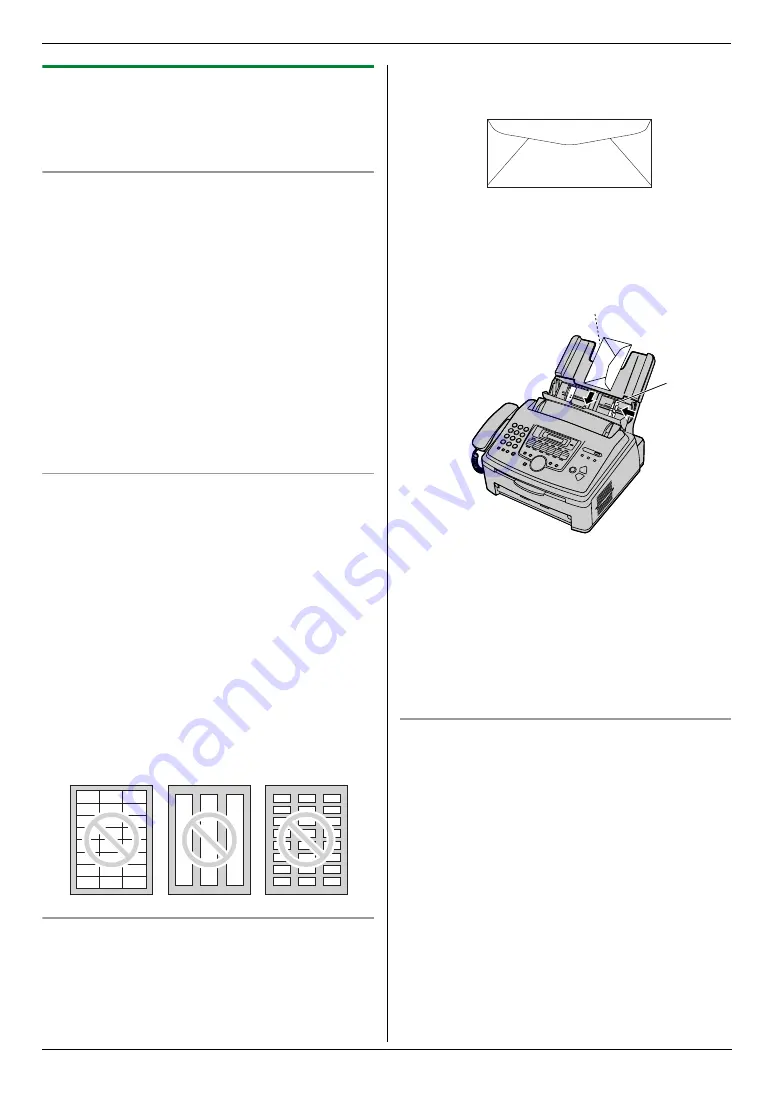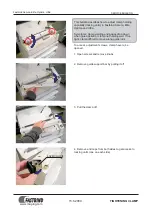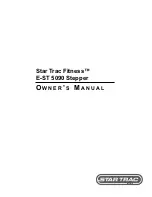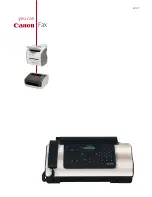
3. Printer
28
3.1.1 Printing on special media
You can print not only on plain paper but also on special
media (transparencies / labels / envelopes).
L
Please refer to page 81 for information on recording
paper.
To print on transparencies
Use transparencies designed for laser printing.
We recommend the following:
3M
®
CG3300/CG5000
L
Load transparency sheets one page at a time for
printing, print-side down.
L
Remove each transparency after printing and
place it on a flat surface to cool and to prevent it
from curling.
L
Do not re-use transparencies that have already been
fed through the unit. This includes transparencies
that have been fed through and ejected without being
printed on.
L
Some types of transparencies have instructions
recommending which side to print on. If the print
quality is poor, try printing on the other side of a new
transparency.
To print on labels
Use labels designed for laser printing. We recommend
the following:
Avery
®
5160/5161/5162/5163/5164/5165/5167/5168
XEROX
®
LWH100/LWH110/LWH120/LWH130/LWH140
L
Load label sheets one page at a time for printing,
print-side down.
L
Remove each label after printing.
L
Do not use the following types of labels:
–
Labels that are wrinkled, damaged or separated
from the backing sheet.
–
Any sheet of labels that has spaces in it where
some of the labels have been removed.
–
Labels that do not completely cover the backing
sheet as follows.
To print on envelopes
Use envelopes designed for laser printing. We
recommend the following:
–
High quality envelopes of 90 g/m
2
paper,
–
Envelopes that have thin, sharply creased leading
edges,
–
Envelopes that have diagonal seams, and
–
Envelopes with a moisture content of 4 % to 6 % by
weight.
L
You can load 10 envelope of 90 g/m
2
paper at a
time for printing, print-side down.
L
Insert envelopes, print-side down (
1
), then
adjust the recording paper guides (
2
).
L
Remove each envelope after printing.
Note:
L
Wrinkles and waving may occur in some cases, even
if high quality envelopes are used.
L
Avoid printing in high humidity. High humidity may
cause the envelope to curl or seal the envelope.
L
Store envelopes away from moisture and humidity,
where they can lay flat and their edges will not be
bent or damaged.
Do not use envelopes with any of the following
characteristics (using these may result in paper
jams):
L
Irregularly shaped envelopes
L
Envelopes with curls, wrinkles, nicks, twists, dog-
ears or other damage
L
Envelopes with side seam construction
L
Highly textured envelopes, or envelopes with
extremely shiny surfaces
L
Envelopes that seal by removing a peel-off strip
L
Envelopes with more than one flap to be sealed
L
Self-adhesive envelopes
L
Envelopes that are baggy or not sharply creased
L
Embossed envelopes
L
Envelopes that have previously been printed on
L
Envelopes that include cotton and/or fibre material
2
1
Summary of Contents for KX-FLM663HX
Page 92: ...PNQX1315ZA CM0408CK0 ...
















































